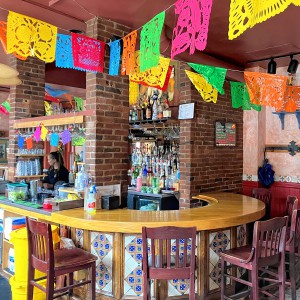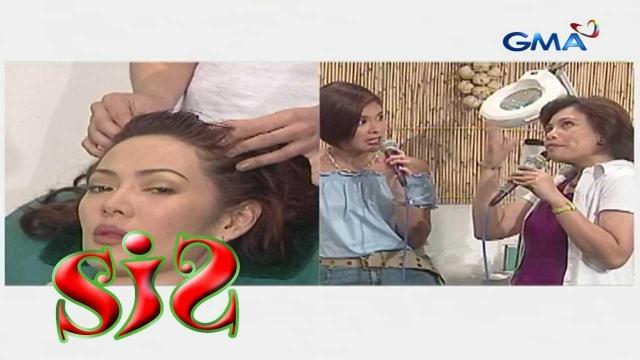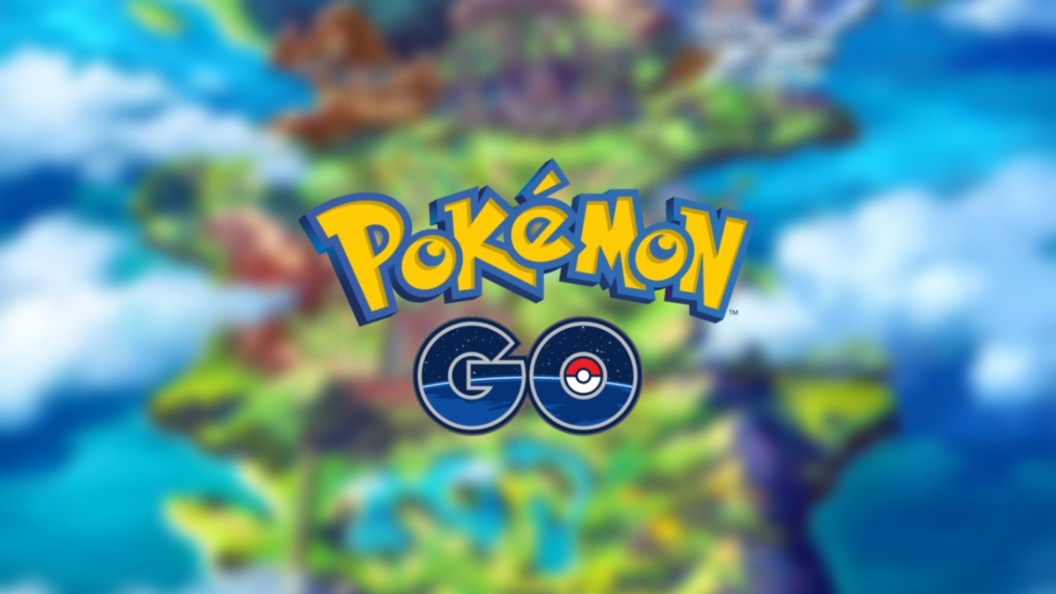How do you determine your value? Your worth as a person? If we’re talking strictly what your body’s made of – things such as carbon, magnesium and stuff – your total value is around £3.60. Roughly the same as a cup of coffee in London .
If you were to part yourself out like a junk car – selling off your heart, your kidneys, a lung or two – you might clear a few hundred thousand. But then you’re dead. Or you could try modelling, the career I stumbled into as a teen, and have total strangers tell you your worth every single day.

My value could be plotted on a chart, like a stock on the Dow Jones. Demand caused it to rise, but a pimple could send it spiralling. The day my stock reached an all-time high was in 1988, when, at 22, I was offered the most lucrative modelling contract on Earth.
I was to be the face of Estée Lauder. You’d think that would be the moment I felt best about myself, the most valued. But the truth is by that point I’d grown so accustomed to being evaluated as a set of parts, an anonymous surface which reflected light in a pleasing fashion, that I didn’t even feel the success belonged to me.
It belonged to the cheekbones, the eyebrows, the shoulders – and in the judgment of those who beheld me. Where was I in all this? Asserting myself – my self – in a job that discourages you from doing so, in which you start working at an age when you simply don’t know any better, that’s always been difficult. It wasn’t till last September, when I was nearing 60, that I finally seized a chance to affirm my own value.
I’d been invited to appear on the Balmain spring/summer runway. During rehearsal, I found myself part of a group who were to come out at the end of the show – not my own entrance, like the rest of the models. I felt I’d worked too long and too hard to be part of the chorus.
In the past I’d have swallowed the slight, then sipped from this tiny cup of poison – “I’m too old. I’m undesirable. I’m yesterday’s news” – but this time I thought, “ No .
I have been modelling for 45 years. I know I merit more than just being background.” So I packed my bag, thanked the folks who had booked me and headed for the exit.
It turned out, as was hastily explained to me, there’d been some miscommunication. I was supposed to close the runway sequence and offer my congratulations to genius designer Olivier Rousteing as he took his bow. As I stepped on to the stage and walked toward Olivier, it felt different from all the other times I’d walked the runway.
This time I felt I belonged. I knew I had earnt this. Getting to that point, that assertion of my own value, has been a journey.
That feeling of displacement I described? That wasn’t brought on by modelling. In fact, it’s marked my life for as long as I can remember. I grew up in Czechoslovakia, in the small town of Prostějov, at the height of the Cold War.
When I was three, my anti-communist mother and father fled the country, leaving me in the care of my grandmother. Years went by and after a highly publicised battle – for the full story, check my Wikipedia page – we finally reconvened in Sweden. A family reunion, if you can call it that, given I was being sent to live with two folks I barely knew, whose marriage had frayed so badly in the intervening years they divorced soon after.
I didn’t know where or to whom I belonged. Sweden proved strange and confusing, and being the new “stinky commie” girl in school didn’t help. I wasn’t cute.
I spoke the wrong language. I was ostracised at best, bullied at worst. But then, at age 13, the most improbable thing happened.
One of my girlfriends loved doing make-up and she used to practise on me, mimicking the styles she saw in Vogue and taking photos to show off her work. When we got the snaps back from the drugstore, she said, “You know, you look good. Like a girl in a magazine.
” She sent some pictures to a local scout to try and get herself work as a photographer. The response came back: “Who’s the girl?” I had just turned 15 when I went to Copenhagen to meet the famous John Casablancas of Elite Model Management. Three months later, when I began modelling in Paris, the same facial features that had marked me as odd were suddenly celebrated.
I’d look in the mirror and see the same face as before. What had changed? It had to be the people around me – and if they could flip that easily, they could flip back at any moment. What little success I had felt tenuous and fragile.
Add this to typical adolescent angst and you had yourself one anxious 15-year-old. To this day, I say I had a big ego but no self-confidence. A booking at a bridal magazine – hilarious, since I was a child bride at best – turned to steady work and lots of travelling.
Sounds glamorous till you get scolded for arriving on set in Tokyo with dirty hair, having slept on the floor of an aeroplane through two days of flights. But then everything accelerated at 17, when I got booked for Sports Illustrated . I posed topless on a beach in Jamaica, arm over my chest.
The next year, they gave me the cover. Then another. Then Vogue took notice and the offers kept rolling in.
I’d walk past a newsstand and see me, me, me – sometimes three or four covers the same month. But I could never take joy in it. I was incredibly insecure.
That’s right, at the height of my career, I had no sense of my value as a person, only as an object. We models were constantly compared to some imagined version of perfection – or each other. People thought nothing of saying, “She doesn’t have Elle Macpherson’s shoulders or Cindy Crawford’s boobs” or “Try the other bathing suit because her thighs are too fat.
” You always felt you were being measured and coming up short. Fast-forward to ’89. With my Estée Lauder deal in place, I had plenty of work.
I raised two children. I acted in movies. I wrote a novel and a children’s book.
Years passed without any particular concern with how I looked. On reflection, I see the entitlement: I thought I’d be deemed beautiful forever. It wasn’t till I turned 40 and signed on to do Dancing with the Stars in the US – it sounded fun! – that my sense of self started to shift.
I was the first to get voted off. It seemed my stock had plummeted. I may still have been attractive, but I was no longer – oh, that awful word – relevant.
So how did I gauge my value at that point? Like many women, I focused on my home and family. I’d married a significantly older man, Ric Ocasek of the rock band The Cars, who’d had a great deal of success of his own. When we met, he was 40 and I was 19, but over time I felt our lives and our needs diverging.
The changes I was going through, and my enhanced sense of self, were not what he’d signed up for. When our marriage ended, after 30 years, our children were adults and I emerged into a confusing new world. The movie career had stalled, the books had come and gone.
Who was I now? “That model from the ’80s”? This former pin-up got a stark test of her sexual currency when she cautiously began trying to date. What I learnt, at 54, is that there’s a certain point – and it appeared that point was far behind me – when you simply stop existing to men. Sometimes they literally walk into you on the street.
At a bar, not only does no one buy you a drink, they pass them right over your head. On dating apps , I was similarly invisible, because men my age invariably sought out women decades younger. The one thing I’d taken for granted, my attractiveness to men, seemed to have been zeroed out.
It wasn’t just that my stock price was low, it was like I’d been delisted from the exchange. And then, a series of catastrophes. In September 2019, Ric died of cardiac arrest while recuperating from cancer surgery.
I learnt he’d written me out of his will and, strapped for cash, I had to put our house on the market – and this during a spiking global pandemic. The man I’d been dating left. Oh, and I was going through menopause .
It was a barrage from all sides. Feeling lost and scared and depressed and lonely, I did something I’d never before considered: sharing my struggle online. On an Instagram I’d barely used, I posted a video about how I was feeling.
It turned out I wasn’t alone. In the years since, well over a million people – mostly women – have joined me. Some grieved lost loved ones, others lost lives, lost loves, lost youth, lost selves.
Some simply ached for connection. We were all trying to find our voices in a world that had no interest in what we said. After a lifetime of being appraised based on my image alone, I suddenly had a voice – one people wanted to hear.
Was this my new identity? An accidental avatar for mature women? It seemed I had stumbled upon a group yearning for representation. Because isn’t it perverse that just as we women start to understand our value, our stock falls? Which brings us to this latest turn of the wheel. Last year, Estée Lauder approached me about working with them again and, to be honest, I wasn’t initially keen.
But, as our conversations continued, it became clear this would be different. Esteé Lauder wanted to amplify my message: affirm your worth by celebrating the woman you are. This is why Estée Lauder and I agreed I wouldn’t promote so-called “anti-ageing” products.
Because I believe ageing is a privilege. I’m not interested in looking 22 – I’ve already been 22! And I don’t see my wrinkles as flaws. Instead, they’re the map of my life etched upon my face.
In recent years that map has had some challenging switchbacks and roundabouts. But right now, on the cusp of 60, I am wiser, happier and better than I’ve ever been. And I’ve found new love, with screenwriter Jeff Greenstein, a man who cherishes my insight and humour as much as my looks.
So now, by contrast with the girl I was at 22 – wobbly sense of self, always seeking outside validation – I know my value. I have a voice, wisdom and, above all, gratitude. This is what I hope to represent as I return to Estée Lauder.
A woman who celebrates who she is. A woman who doesn’t let others set her worth. A woman who is priceless.
.
Entertainment

“I’m Not Interested In Looking 22 – I’ve Already Been 22!”: The Second Coming Of Paulina Porizkova

Thanks to Vogue covers, legendary runway shows and a contract with Estée Lauder, Paulina Porizkova was the world’s best paid model in her 20s. But what happened when the flashbulbs stopped?















